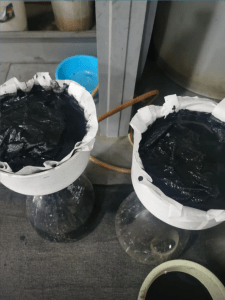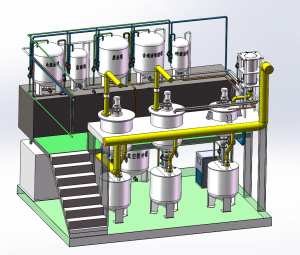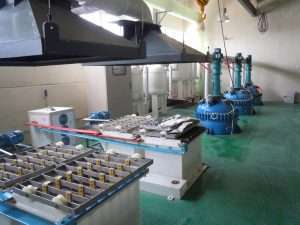Call us now:
1. Washing method
Water washing method is a commonly used rhodium recovery and refining technology, and its main process includes steps such as sand washing, mixing, refinement, water washing, precipitation, and filtration. First, mix the ore and other minerals into the panning machine for panning, then put the ore mixture after panning into the mixer to stir to refine the ore and other minerals, and then put the refined ore into the In the washing tank, use the mixed solution to wash with water under the condition of adding a dissolving agent to dissolve the rhodium from the mixed solution, deposit the dissolved rhodium in the sedimentation tank, and filter and clean it with a filter to obtain the refined Pure rhodium.
2. Pickling method
Pickling method is a commonly used rhodium recovery and refining technology, and its main process includes steps such as sand washing, mixing, refinement, pickling, concentration, and filtration. First, mix the ore and other minerals into the panning machine for panning, then put the ore mixture after panning into the mixer to stir to refine the ore and other minerals, and then put the refined ore into the In the pickling tank, pickling is carried out with the mixed solution under the condition of putting an acidic dissolving agent, so that rhodium is dissolved from the mixed solution, and the dissolved rhodium is concentrated and filtered to obtain purified rhodium.
3. Sodium nitrite complex method controls the rhodium content of the rhodium chloride complex to 40-50g/L, adjust the pH value with alkaline solution, heat the solution to above 70°C, add solid sodium nitrite or 50% sodium nitrite under stirring Sodium nitrite solution to generate Na3Rh (NO2) 6. The color of the solution changed from rose red to straw yellow.
Boil for 30 minutes to hydrolyze other impurities except germanium into hydroxide precipitates. After the solution continued to boil for 1 hour, it was cooled and filtered, and ammonium chloride was added to precipitate rhodium in the form of Na(NH4)ZRh(N02). After the precipitation was completed, it was filtered off immediately, and the precipitate was dissolved with acid. The solution is concentrated to catch nitrate and then dissolved with acid to make rhodium into chlorine complex solution. After analysis, if the impurity elements are unqualified, the above method can be used to repeatedly remove impurities or use other methods to remove impurities until the purity of the solution is qualified.
Use a special reducing agent to reduce rhodium, boil the solution to completely hydrolyze the rhodium during reduction, and then add the reducing agent. After adding the reducing agent, add an appropriate amount of ammonia water and continue to boil the solution for a certain period of time. After cooling, the rhodium black is filtered out and washed with pure water to completely remove the sodium salt. After drying and hydrogen reduction, 99% to 99.9% pure rhodium powder can be obtained.
4. Ammonification method Ammonification method is divided into five-ammoniation method and three-ammoniation method. The pentaammoniation method is based on the following reaction: (NH4)3RhCl6+5NH4OH == [Rh(NH3)5Cl]Cl2↓+3NH4Cl+5H2O precipitate is filtered out and washed with NaCl solution, then dissolved in NaOH solution, so that Ir(OH)3 remains in the raffinate.
The rhodium solution is acidified with hydrochloric acid and treated with nitric acid to convert the rhodium into a [Rh(NH3)5Cl](NO3)2 solution. After concentrating the solution and converting the nitrate into a rhodium chloride complex, the above process is repeated until pure [Rh(NH3)5Cl]Cl2 is obtained. After calcination, cook with dilute aqua regia to dissolve some soluble impurities, and then reduce it in hydrogen flow, the purity of rhodium can reach 99% to 99.9%.


